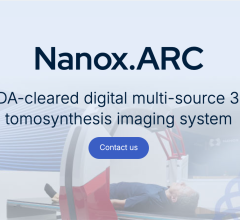
SonArray 3D system
March 9, 2009 – In a minimally invasive interventional radiology treatment for prostate cancer, the use of 3D transperineal mapping biopsy for determining the extent of prostate cancer - when compared with the commonly used transrectal ultrasound (TRUS) biopsy - heavily impacted how patients’ disease was managed in 70 percent of the cases, according to studies released at the Society of Interventional Radiology's 34th Annual Scientific Meeting.
In addition, minimally invasive interventional treatment was found to be as effective as surgery in destroying diseased tumors and can be considered a first-line treatment for patients of all risk levels and particularly those who have failed radiation.
"Our data show that focal cryoablation is as good for prostate cancer control as any other treatment, including surgery, radiation and hormone therapy, but it is less invasive and traumatic for patients, preserves sexual and urinary function and has no major complications. Interventional radiologists tailor treatment to each patient's disease. Instead of removing the entire prostate, or freezing the entire prostate or using radiation on the entire prostate, interventional radiologists can find out where the cancer is and just destroy the cancer," said study author Gary M. Onik, M.D., interventional radiologist and director of the Center for Safer Prostate Cancer Therapy in Orlando, FL. "We've reached a tipping point: treating only the tumor instead of the whole prostate gland is a major and profound departure from the current thinking about prostate cancer," added Dr. Onik. With cryoablation, interventional radiologists insert a probe through the skin, using imaging to guide the needle to the tumor; the probe then circulates extremely cold gas to freeze and destroy the cancerous tissue. This minimally invasive treatment targets only the cancer itself, sparing healthy tissue in and around the prostate gland rather than destroying it, as traditional approaches do, noted the professor at the University of Central Florida. "You can go home on the same day of the procedure, and you can repeat the treatment, if needed, in later years," said Onik. Additionally, Onik presented results of a 3-D biopsy method that provides superior information on the extent and grade of prostate cancer as opposed to the current standard TRUS biopsy.
Calling focal cryoablation a "male lumpectomy" reflects the origins of this approach in the breast-sparing surgery that replaced radical mastectomy as the preferred treatment for breast cancer, said Dr. Onik. Unlike breast lumpectomy, a surgical lumpectomy for prostate cancer is not technically feasible; so to treat just a portion of the prostate, minimally invasive cryoablation is needed. Cryoablation (or cryo or cryotherapy) spares as much as possible of the prostate gland and its neurovascular bundles, limiting the side effects of bladder control problems (incontinence) and erectile dysfunction (impotence) that result from more radical prostate cancer treatments. It also represents an advantage over "watchful waiting," because all treatment options are preserved. "Any risks are fewer and lesser in intensity than surgery; so if you have the equivalent chance of cancer being cured with far less chance of having any complications, why wouldn't you choose it?" asked Dr. Onik.
"There is no question that we can eradicate prostate cancer (when that cancer has not spread to other parts of the body) by freezing it and that there is a better way to 'map' the disease," said Dr. Onik.
According to Dr. Onik, the 3D transperineal biopsy complements the focal cryoablation approach because earlier detection of smaller tumors increases the likelihood that a small tumor can be treated using cryoablation. In his study, Dr. Onik restaged 180 patients who had previously undergone TRUS mapping biopsies who were considering conservative management for their cancer. The results showed that 70 percent of the men would have their management changed by the new information provided by mapping. Through mapping, more than 50 percent of men who were diagnosed with cancer on one side of the prostate gland with traditional TRUS biopsy had undetected cancer on the other side as well, he said.
Management of prostate cancer is in great part determined by the Gleason score, a cancer ranking method indicating tumor grade and stage and the extent and location of a patient's disease.
"When we restaged the men, we found that 22 percent of them experienced an increase in their Gleason score - meaning that they had a more aggressive cancer than was originally thought from their original biopsy. The 3D mapping biopsy provided life-saving information," said Dr. Onik. "This biopsy technique allows us to map the location of the tumor with tremendous precision and has the potential to greatly affect the decisions we make about treating prostate cancer," Dr. Onik said. "The data are unequivocal. If you're doing 'watchful waiting,' get mapped. If you're having radiation or hormone therapy or thinking about getting a 'nerve-sparing' radical prostatectomy, get mapped. If TRUS doesn't show all the cancer that's present, you're not going to have the proper treatment," said Onik.
With 3D transperineal mapping, a grid placed over the perineum (the area of skin between the rectum and the scrotum) allows an interventional radiologist to accurately map the location of each biopsy core removed. The cores are taken through the skin rather than through the rectum, allowing many more cores to be removed - about 50 compared to 10-12 in a TRUS biopsy. The mapping grid also allows the location of the tumor to be known much more precisely, allowing an interventional radiologist to cryoablate (freeze) only the tumor and not the whole prostate gland.
Controversy surrounds the treatment of prostate cancer, which usually grows slowly and initially remains confined to the prostate gland, said Dr. Onik. Growing evidence of overdetection and overtreatment in many men with low-risk tumors has led to a concept in the medical community of "watchful waiting" or observing a man's disease progression prior to initiating treatment. Many patients, however, feel uncomfortable with this strategy and may proceed to radical or aggressive treatment, said Dr. Onik. "When men must choose between 'watchful waiting' and high-morbidity whole-gland treatments (like surgery and radiotherapy), a lumpectomy-type treatment, which has so markedly changed the management of breast cancer for women, is a welcome 'middle ground' addition for those with prostate cancer," said Onik.
“Interventional cryoablation for prostate cancer is not experimental. This is a treatment option that doctors should discuss with their patients early on,” emphasized Dr. Onik. Most people don’t realize that you can surgically remove the whole prostate and, in 20 percent of the cases, the cancer can be left (called a positive margin), said Dr. Onik, who works in consultation with urologists. Doctors should discuss cryoablation with patients early on, he advised, noting that recently the American Urological Association issued a best practice statement that indicated that cryotherapy is an option for men who have clinically organ-confined prostate cancer of any grade with negative metastatic evaluation. Since this interventional treatment is not widely known to doctors and patients, individuals will need to pursue it on their own, he added.
Abstract 75: "Focal Therapy for Prostate Cancer -- 120 Patients With Up to 12-Year Follow-up," G. Onik, Center for Safer Prostate Cancer Therapy, Orlando, Fla., SIR 34th Annual Scientific Meeting March 7-12, 2009.
Abstract 198: "3D Prostate Mapping Biopsy Has a Potentially Significant Impact on Prostate Cancer Management," G. Onik, M. Miessau; Center for Safer Prostate Cancer Therapy, Orlando, Fla., SIR 34th Annual Scientific Meeting March 7-12, 2009. Both abstracts can be found at www.SIRmeeting.org.
For more information: www.SIRweb.org


 April 18, 2025
April 18, 2025 









